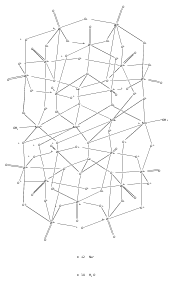Co-reporter: Xiaojing Sang, Jiansheng Li, Lancui Zhang, Zanjiao Wang, Weilin Chen, Zaiming Zhu, Zhongmin Su, and Enbo Wang
pp: 7876
Publication Date(Web):April 23, 2014
DOI: 10.1021/am501192f
A novel sandwich-type germanotungstate [C(NH2)3]10[Mn2{Sn(CH2)2COOH}2(B-α-GeW9O34)2]·8H2O (1) represents the first single crystalline polyoxometalate (POM) functionalized by open chain carboxyethyltin, which was designed and synthesized in aqueous solution and applied to a dye-sensitized solar cell (DSSC) for the first time. Its photosensitivity was explored through a fluorescence spectrum (FL), surface photovoltage spectrum (SPV), electrochemical method, and solid diffuse spectrum. 1 displays the primary features of sensitizers in DSSCs, and the efficiency of the solar cell is 0.22%. Delightedly, when 1 was employed to assemble a cosensitized solar cell configuration by preparing a 1-doped TiO2 electrode and additionally adsorbing N719 dyes, a considerably improved efficiency was achieved through increasing spectral absorption and accelerating electron transport, which is 19.4% higher than that of single N719 sensitization. This result opens up a new way to position different dyes on a single TiO2 film for cosensitization.Keywords: carboxyethyltin; dye-sensitized solar cell; photosensitivity; polyoxometalate; TiO2;
